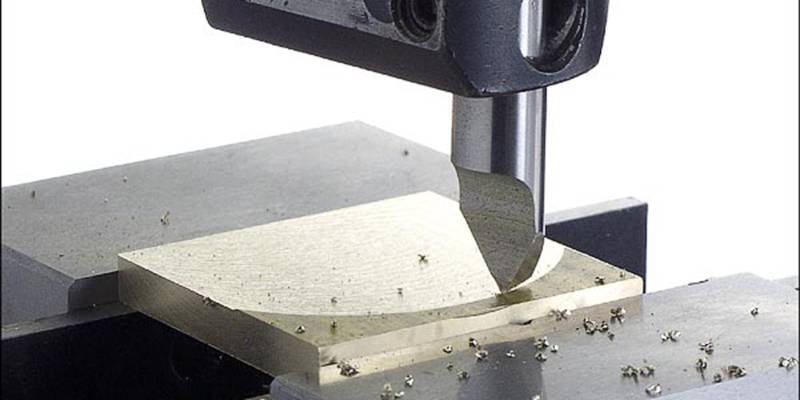- September 30, 2022
CNC tooling comprises various motorized machines and tools that use pre-programmed software to automate and control different machining operations. These machines play a pivotal role in manufacturing industries. Categorically, the milling fly cutter used in CNC milling operations impacts the finishing of large and flat surfaces. Here, we will take a detailed look at the types, specifications, and applications of fly cutters.
Fly Cutter – Definition
Fly cutters are rotary cutting tools used in sideways motions to machine and produce finished plane surfaces. While these handy tools can be applied to various machines, they are mostly used on CNC milling machines.
For example, fly cutters use one or more single-point tools, also called fly cutter bits, which get inserted into the cylindrical body. Fly cutters get mounted in a special angled holder, so when the whole unit is rotating, these bits take the surfacing cuts for soft materials like aluminum and hard materials like steel.
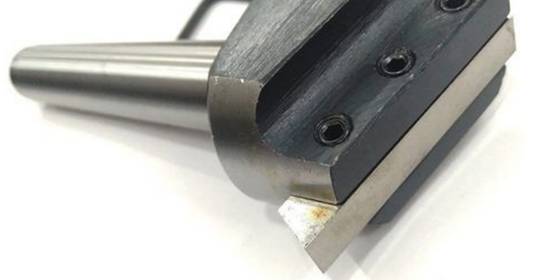
Moreover, some specific milling fly cutter types, such as the rotary cutting tool, are suitable for cutting, drilling, sanding, carving, and grinding operations. But note that fly cutters apply for mild cutting operations rather than heavy-duty cutting.
Types of Fly Cutters
Most fly cutters get designed and fabricated to meet industrial specifications. Nonetheless, the various types of fly cutters differ in vital considerations such as the cutting material, feed rate and cutting speed. Therefore, depending on your machining project, you must choose the right milling cutter types for finishing large and plane surfaces. Let’s take a closer look at the common types of fly cutters.
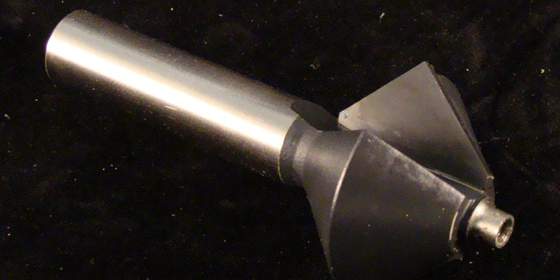
1. Point Cutter
As the name suggests, this fly cutter comprises needle-like points designed for cutting heavily populated corals. Most point cutters have two cutting edges per blade, and these ground edges help obtain precise cuts when milling. In addition, point cutters extend to areas that are hard to reach, slipping in and out of the handle for safe storage. Depending on your project, you can opt for either a long (500mm) or short (300mm) blade.
2. Rotary Cutting Tool
This fly cutter applies to cutting, drilling, and grinding various fabrics quickly without altering the patterned cutting line. Sometimes, experts use the rotary cutting tool to cut up to eight layers of fabric in just one milling session.
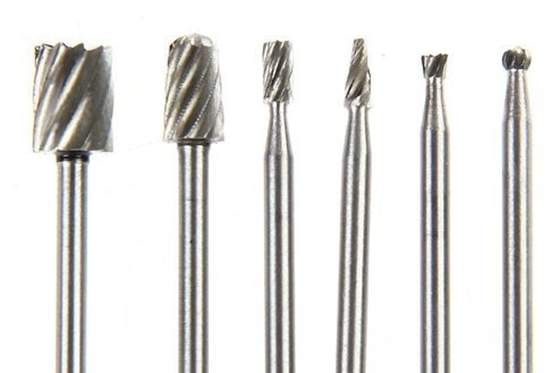
3. Rotary Carving Tool
Rotary carving tools are usually used for carving operations on hard materials. More specifically, manufacturers apply this fly cutter type to carve through the grain wood or engrave the blown glass.
Fly Cutter Components and Specifications
Fly cutters have unique features and specifications. Check them below:
Components of Fly Cutter
Typical fly cutters come whole comprising a couple of parts which are:
- Cylindrical body
- Holder
- Thrust washer
- Fasteners
- Draw bolt
- A left-handed carbide cutting tool
In most cases, the centrally placed cylindrical body of the milling fly cutter holds one tool bit. Meanwhile, fly cutters with two tool bits are often fastened with one tool bit on each end. Before use, these fly cutter bits get affixed in a special angled holder at the right angle (90 degrees) to the main axis of the bar stock. Also, the left-handed carbide tool is usually held at 30 to 60 degrees.
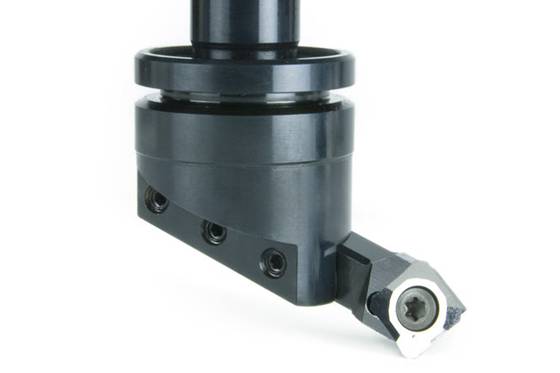
Specifications and Size of Fly Cutter
There are different ways fly cutters operate. Depending on the type of your milling project, you must ensure each fly cutter bit receives enough power from your milling machine. For instance, the rotary cutting tool comprises a variable speed motor for low to heavy cutting operations with power ranging from 0 to 30000rpm.
Moving forward, note that each length of the fly cutter body uses a specific length of a tool bit for optimal results. For instance, the main body of a rotary cutting tool has a spindle lock, permitting the opening and closing of the 1/8-inch collet to fit standard rotatory purposes. Below are some other vital rules of thumb to keep in mind:
- The 3/4-inch body fly cutter uses a 3/16-inch tool bit.
- The 1-1/8-inch body uses a 1/4-inch tool bit.
- The 1-3/8-inch body fly cutter uses a 5/16-inch tool bit.
Fly Cutter vs. Face Mill: What are the Differences?
Generally, face milling encompasses the processes of milling flat or plane surfaces positioned at the right angle to the axis of the cutter’s rotatory movement for a quality surface finish. Face mills and fly cutters differ in certain aspects. Here are some of the differences:
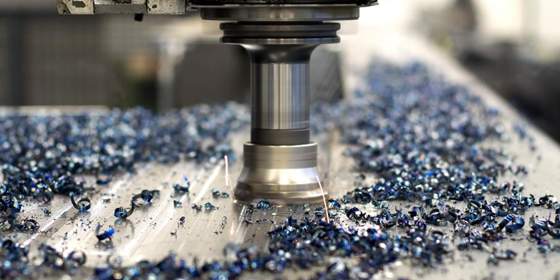
1. Number of Inserts
Fly cutters utilize one or two inserts at a lesser cutting speed to remove excess workpieces during milling operations. In comparison, face mills employ multiple inserts at a higher cutting speed, making them more suitable for heavy material removal. However, the height of face mill inserts cannot be separately adjusted, thus resulting in varying chip loads between the different inserts.
2. Finishing Quality
Face mills operations offer quality surface finishes. In the meantime, milling fly cutters use skim cut techniques lesser to provide a much finer finish. Even so, getting a large face mill remains the better choice for high-volume projects, as they provide faster speed per operation.
3. Cutting Requirements
The cutting edge of correctly positioned fly cutters can overlay large surfaces in one milling session to produce a very flat surface. On the other hand, face mills have a cutting edge of varying heights, making them more suitable for producing ridged surfaces.
4. Cost
Face mills need more weighty, rigid, and powerful machines with large spindle power, making them expensive. In contrast, milling fly cutters are well-suited for smaller machines with lesser spindle powder and are much cheaper. In addition, the higher the inserts needed, the more the operating costs. Hence, fly cutters are inexpensive compared to face mills, requiring one or two inserts.
Considerations of Fly Cutter for Finishing Surfaces
Fly cutter tools have become indispensable tools for finishing surfaces. However, there are some specific factors to consider before using these tools. Check these considerations below:
Fly Cutter Maintenance
If you are operating a small or light-duty mill, you should use single-toothed fly cutters to get the best performance. On the flip side, multi-toothed milling fly cutters do not work optimally with smaller machines due to the lack of substantial power and rigidity required to drive each tooth through workpieces.
It also remains essential that the fly cutter bit is sharp enough to drive cuts without additional power to overcome challenges and ensure optimal finishing results. Notwithstanding, you can re-sharpen the tool by grinding it straightforwardly after long-term usage.
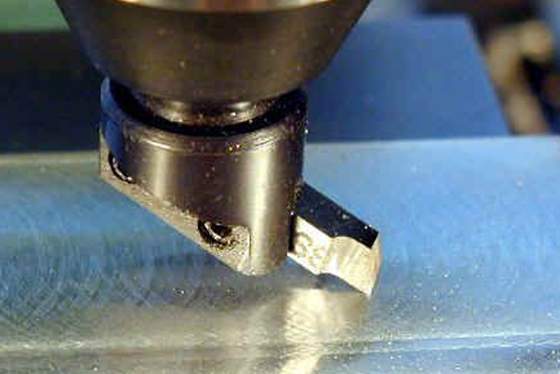
Point Radius
Professional machinists maintain the point radius of the fly cutter tool to less than 1.5mm. This is because the smaller the point radius, the slower the feed rate, thus giving a fine finish. Thus, make you avoid large tip radiuses as they increase the tool cutting pressure, causing deflections. This eventually results in squealing, chatters, and poor finishing outcomes.
Type of Workpiece
When applying fly cutter to steel grades like 1018, it is best to use carbide bits with zero rakes and at about 5 degrees relief on the surface. However, for aluminum materials such as 6061-TS, experts use high-speed fly cutter bits to grind about 60 degrees of rake on the surface from the end.
Furthermore, most machinists tend to adjust the diameter of normal fly cutters up to 51 mm. Thus, at this set diameter, you can easily apply the fly cutter to take a 0.25 mm deep cut in aluminum.
Applications of Fly Cutters
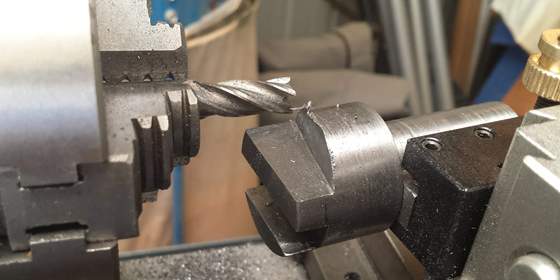
Fly cutters apply in many manufacturing industries today. In these industries, these mechanical tools are usually operated in CNC tools and manual mills without needing additional arbors. As such, milling fly cutters are often employed to remove a large number of excess workpiece materials and then level it. Most manufacturers apply fly cutters to many materials, including metals, wood, and glass.
WayKen Helps you Choose the Right Cutter for Milling Projects
There are different types of milling fly cutters, and each type has its pros, compatibilities, and limitations that you must cautiously examine. Of course, you also consult an expert to get professional advice.
At WayKen, we specialize in milling services that create high-tolerance precision metal and plastic parts. With years of machining experiences, our engineers can help you quickyly choose the right cutter for the milled parts. What’ more, our in-house machine shop with advanced multi-axis CNC milling machines can help you deliver these parts quickly and affordably. Contact us today to get a free quote and DfM feedback.
Conclusion
Today, CNC milling apply across several manufacturing industries to provide a high level of precision and accuracy, efficiency, and consistency in machining operations. Fly cutters are essential rotary cutting tools with one or more bits inserted into their body. These tools are primarily used on CNC milling machines for machining and leveling large and flat surfaces, like the face mills. This article will guide you in selecting the right fly cutter for your milling project.
FAQ
How do I choose a milling tool?
You must consider vital factors such as the type of material, the dimension of internal and external profiles (Fillet Vs Chamfer ), and the type of desired surface finish for the part.
Why is down milling generally avoided?
Down milling procedures make it harder to trap the chips between the tool and the workpiece. Besides, the rotary movement of milling fly cutters easily throws the chip away.
Can you cut a hole with a fly cutter?
Yes, you can cut a hole with a fly cutter. You can adjust the diameter of the rotary fly cutter to meet the desired dimension of the hole before placing it in the CNC milling machine for drilling.

